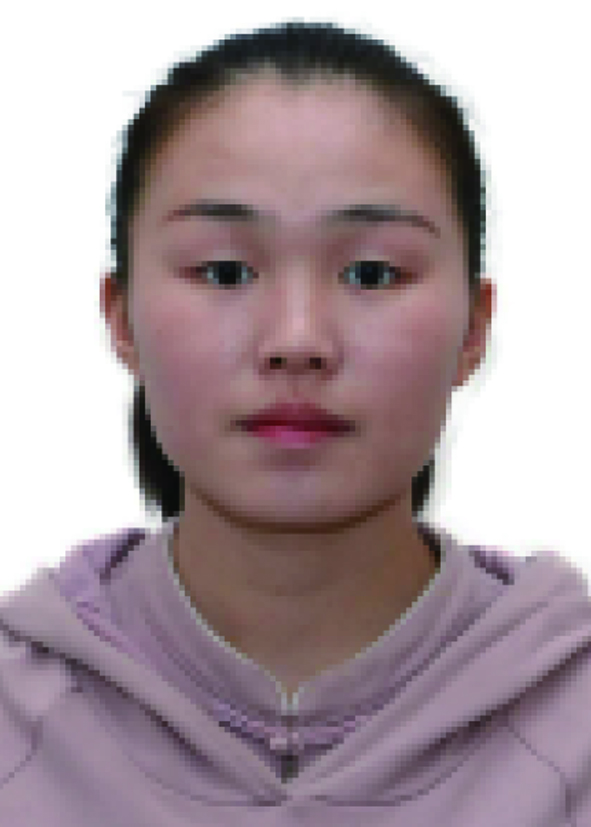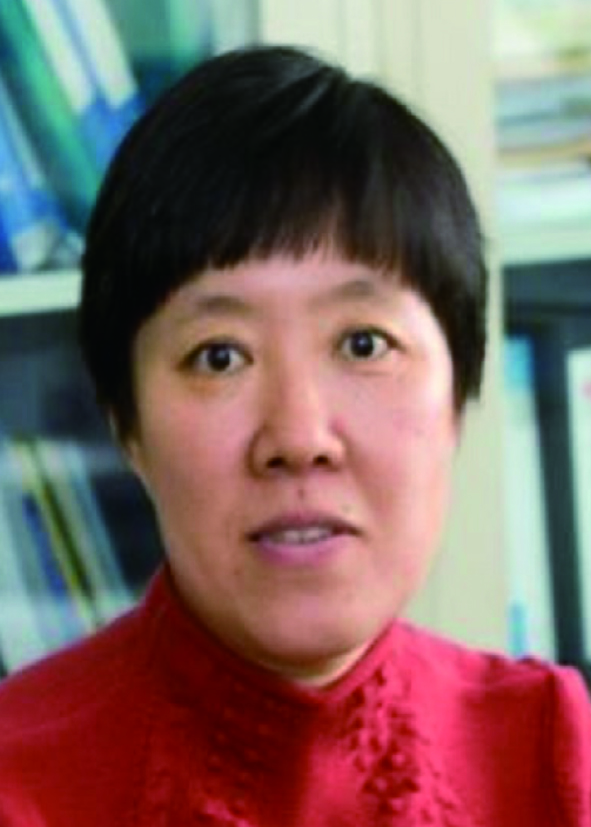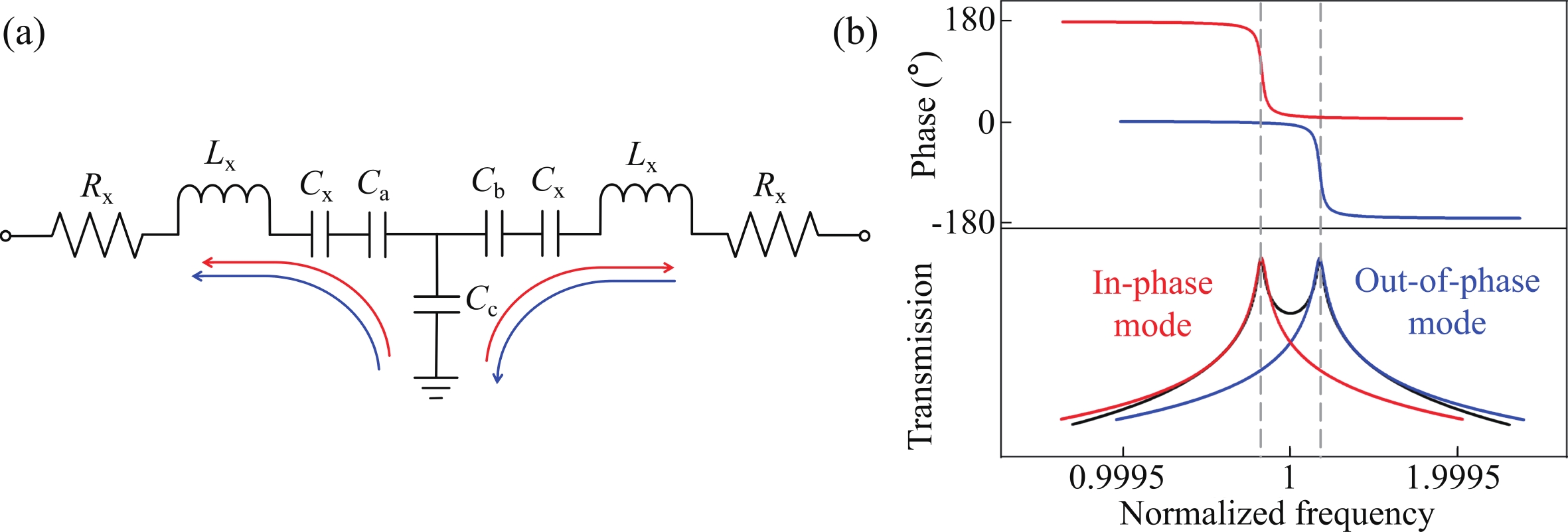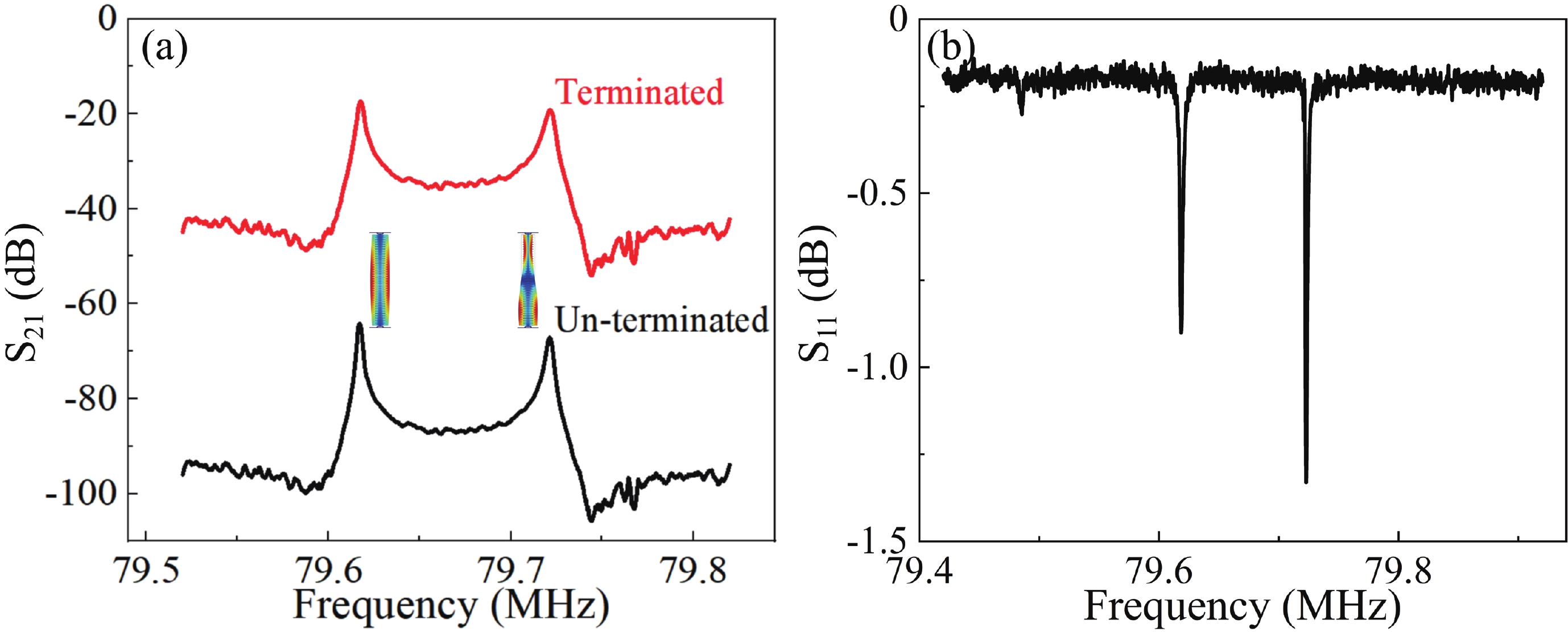| Citation: |
Wei Wang, Wenli Liu, Junyuan Zhao, Bo Niu, Zeyu Wu, Yinfang Zhu, Jinling Yang, Fuhua Yang. A mechanically coupled MEMS filter with high-Q width extensional mode resonators[J]. Journal of Semiconductors, 2024, 45(8): 082301. doi: 10.1088/1674-4926/24050007
****
W Wang, W L Liu, J Y Zhao, B Niu, Z Y Wu, Y F Zhu, J L Yang, and F H Yang, A mechanically coupled MEMS filter with high-Q width extensional mode resonators[J]. J. Semicond., 2024, 45(8), 082301 doi: 10.1088/1674-4926/24050007
|
A mechanically coupled MEMS filter with high-Q width extensional mode resonators
DOI: 10.1088/1674-4926/24050007
More Information
-
Abstract
This work presents a novel radio frequency (RF) narrowband Si micro-electro-mechanical systems (MEMS) filter based on capacitively transduced slotted width extensional mode (WEM) resonators. The flexibility of the plate leads to multiple modes near the target frequency. The high Q-factor resonators of around 100 000 enable narrow bandwidth filters with small size and simplified design. The 1-wavelength and 2-wavelength WEMs were first developed as a pair of coupled modes to form a passband. To reduce bandwidth, two plates are coupled with a λ-length coupling beam. The 79.69 MHz coupled plate filter (CPF) achieved a narrow bandwidth of 8.8 kHz, corresponding to a tiny 0.011%. The CPF exhibits an impressive 34.84 dB stopband rejection and 7.82 dB insertion loss with near-zero passband ripple. In summary, the RF MEMS filter presented in this work shows promising potential for application in RF transceiver front-ends. -
References
[1] Behzadi K, Baghelani M. Bandwidth controlled weakly connected MEMS resonators based narrowband filter. IET Circuits Devices Syst, 2020, 14, 1265 doi: 10.1049/iet-cds.2020.0216[2] Gruszczynski S, Wincza K, Borgosz J. Narrow-band band-pass filter for application in high selectivity receiver of nonlinear junction detector. 2008 China-Japan Joint Microwave Conference, 2008, 400 doi: 10.1109/CJMW.2008.4772455[3] Ozgurluk A, Akgul M, Nguyen C T C. RF channel-select micromechanical disk filters—Part I: Design. IEEE Trans Ultrason Ferroelectr Freq Contr, 2019, 66, 192 doi: 10.1109/TUFFC.2018.2881727[4] Li S, Lin Y, Ren Z, et al. A micromechanical parallel-class disk-array filter. 2007 IEEE International Frequency Control Symposium Joint with the 21st European Frequency and Time Forum, 2007, 1356 doi: 10.1109/FREQ.2007.4319298[5] Aigner R. SAW and BAW technologies for RF filter applications: A review of the relative strengths and weaknesses. 2008 IEEE Ultrasonics Symposium, 2008, 582 doi: 10.1109/ULTSYM.2008.0140[6] Bagdasaryan A S, Gulyaev Y V, Nikitov S A, et al. Narrowband surface-acoustic-wave filters in RF identification systems. J Commun Technol Electron, 2008, 53, 842 doi: 10.1134/S1064226908070164[7] Loebl H P, Metzmacher C, Milsom R F, et al. Narrow band bulk acoustic wave filters. IEEE Ultrasonics Symposium, 2004, 411 doi: 10.1109/ULTSYM.2004.1417750[8] Kuhn W B, Stephenson F W, Elshabini-Riad A. A 200 MHz CMOS Q-enhanced LC bandpass filter. IEEE J Solid-State Circuits, 1996, 31, 1112 doi: 10.1109/4.508258[9] Nguyen N M, Meyer R G. Si IC-compatible inductors and LC passive filters. IEEE J Solid-State Circuits, 1990, 25, 1028 doi: 10.1109/4.58301[10] Pillai G, Chen C Y, Li S S. Support transducer enabled single resonator channel select filter. 2019 Joint Conference of the IEEE International Frequency Control Symposium and European Frequency and Time Forum (EFTF/IFC), 2019, 1 doi: 10.1109/FCS.2019.8856062[11] Yen T T, Lin C M, Lai Y J, et al. Fine frequency selection techniques for aluminum nitride Lamb wave resonators. 2010 IEEE International Frequency Control Symposium, 2010, 9 doi: 10.1109/FREQ.2010.5556384[12] Naing T L, Nilchi J N, Liu R N, et al. Active Q-control for improved insertion loss micromechanical filters. 2014 IEEE International Frequency Control Symposium (FCS), 2014, 1 doi: 10.1109/FCS.2014.6860011[13] Demirci M U, Nguyen C T C. Single-resonator fourth-order micromechanical disk filters. 18th IEEE International Conference on Micro Electro Mechanical Systems, 2005, 207 doi: 10.1109/MEMSYS.2005.1453903[14] Chen C, Li M, Li C, et al. Design and characterization of mechanically-coupled CMOS-MEMS filters. 2013 Transducers & Eurosensors XXVII: The 17th International Conference on Solid-State Sensors, Actuators and Microsystems (TRANSDUCERS & EUROSENSORS XXVII), 2013, 2288 doi: 10.1109/Transducers.2013.6627262[15] Akgul M, Nguyen C T C. A passband-corrected high rejection channel-select micromechanical disk filter. 2014 IEEE International Frequency Control Symposium (FCS), 2014, 1 doi: 10.1109/FCS.2014.6860009[16] Chen C Y, Li M H, Li C S, et al. Design and characterization of mechanically coupled CMOS-MEMS filters for channel-select applications. Sens Actuat A Phys, 2014, 216, 394 doi: 10.1016/j.sna.2014.04.026[17] Zverev A. Handbook of filter synthesis. 1967[18] Zhang H M, Pandit M, Sun J K, et al. On weakly coupled resonant MEMS transducers operating in the modal overlap regime. IEEE Trans Ultrason Ferroelectr Freq Contr, 2021, 68, 1448 doi: 10.1109/TUFFC.2020.3028567[19] Liu W L, Lu Y J, Chen Z J, et al. A GHz silicon-based width extensional mode MEMS resonator with Q over 10, 000. Sensors, 2023, 23, 3808 doi: 10.3390/s23083808[20] Casinovi G, Gao X, Ayazi F. Lamb waves and resonant modes in rectangular-bar silicon resonators. J Microelectromech Syst, 2010, 19, 827 doi: 10.1109/JMEMS.2010.2050862[21] Pourkamali S, Ho G K, Ayazi F. Low-impedance VHF and UHF capacitive silicon bulk acoustic wave resonators—Part I: Concept and fabrication. IEEE Trans Electron Devices, 2007, 54, 2017 doi: 10.1109/TED.2007.901403[22] Jia Q Q, Chen Z J, Liu W L, et al. A novel extensional bulk mode resonator with low bias voltages. Electronics, 2022, 11, 910 doi: 10.3390/electronics11060910[23] Han J Z, Xiao Y H, Chen W, et al. Temperature compensated bulk-mode capacitive MEMS resonators with ±16 ppm temperature stability over industrial temperature ranges. J Microelectromech Syst, 2022, 31, 723 doi: 10.1109/JMEMS.2022.3189202[24] Wang L L, Wang C, Wang Y, et al. A review on coupled bulk acoustic wave MEMS resonators. Sensors, 2022, 22, 3857 doi: 10.3390/s22103857[25] Giner J, Uranga A, Muñóz-Gamarra J L, et al. A fully integrated programmable dual-band RF filter based on electrically and mechanically coupled CMOS-MEMS resonators. J Micromech Microeng, 2012, 22, 055020 doi: 10.1088/0960-1317/22/5/055020[26] Yan J Z, Seshia A A, Phan K L, et al. Internal electrical phase inversion for FF-beam resonator arrays and tuning fork filters. 2008 IEEE 21st International Conference on Micro Electro Mechanical Systems, 2008, 1028 doi: 10.1109/MEMSYS.2008.4443834[27] Akgul M, Ozgurluk A, Nguyen C T C. RF channel-select micromechanical disk filters—Part II: Demonstration. IEEE Trans Ultrason Ferroelectr Freq Contr, 2019, 66, 218 doi: 10.1109/TUFFC.2018.2883296[28] Lopez J L, Verd J, Uranga A, et al. A CMOS–MEMS RF-tunable bandpass filter based on two high-Q 22-MHz polysilicon clamped-clamped beam resonators. IEEE Electron Device Lett, 2009, 30, 718 doi: 10.1109/LED.2009.2022509[29] Al Hafiz M A, Kosuru L, Hajjaj A Z, et al. Highly tunable narrow bandpass MEMS filter. IEEE Trans Electron Devices, 2017, 64, 3392 doi: 10.1109/TED.2017.2716949[30] Liu W L, Chen Z J, Kan X, et al. Novel narrowband radio frequency microelectromechanical systems filters. J Micromech Microeng, 2021, 31, 025003 doi: 10.1088/1361-6439/abcdad -
Proportional views





 Wei Wang received her bachelor's degree in electronic Science and Technology from Shandong Institute of Business and Technology in 2019, and began to pursue her master's degree at the Institute of Semiconductors of the Chinese Academy of Sciences in 2020. Her research interests are MEMS sensors and filters.
Wei Wang received her bachelor's degree in electronic Science and Technology from Shandong Institute of Business and Technology in 2019, and began to pursue her master's degree at the Institute of Semiconductors of the Chinese Academy of Sciences in 2020. Her research interests are MEMS sensors and filters. Jinling Yang received the Ph.D. degree in solid state physics from Institute of Physics, CAS in 1997. After a two-year stay at Venture Business Laboratory of Tohoku University as a Post-doc., she joined IMTEK, University of Freiburg, as a Post-doc. and worked on the reliability of MEMS thin films. In 2002, she joined Institute of Physics, University of Basel and IBM Zurich Research lab Switzerland, to work on scanning force microscopy with ultrasmall cantilevers. Since 2004, she has worked as a Professor in Institute of Semiconductors, CAS. Her group focuses on RF-MEMS devices, reliability of MEMS thin films.
Jinling Yang received the Ph.D. degree in solid state physics from Institute of Physics, CAS in 1997. After a two-year stay at Venture Business Laboratory of Tohoku University as a Post-doc., she joined IMTEK, University of Freiburg, as a Post-doc. and worked on the reliability of MEMS thin films. In 2002, she joined Institute of Physics, University of Basel and IBM Zurich Research lab Switzerland, to work on scanning force microscopy with ultrasmall cantilevers. Since 2004, she has worked as a Professor in Institute of Semiconductors, CAS. Her group focuses on RF-MEMS devices, reliability of MEMS thin films.
 DownLoad:
DownLoad:



























